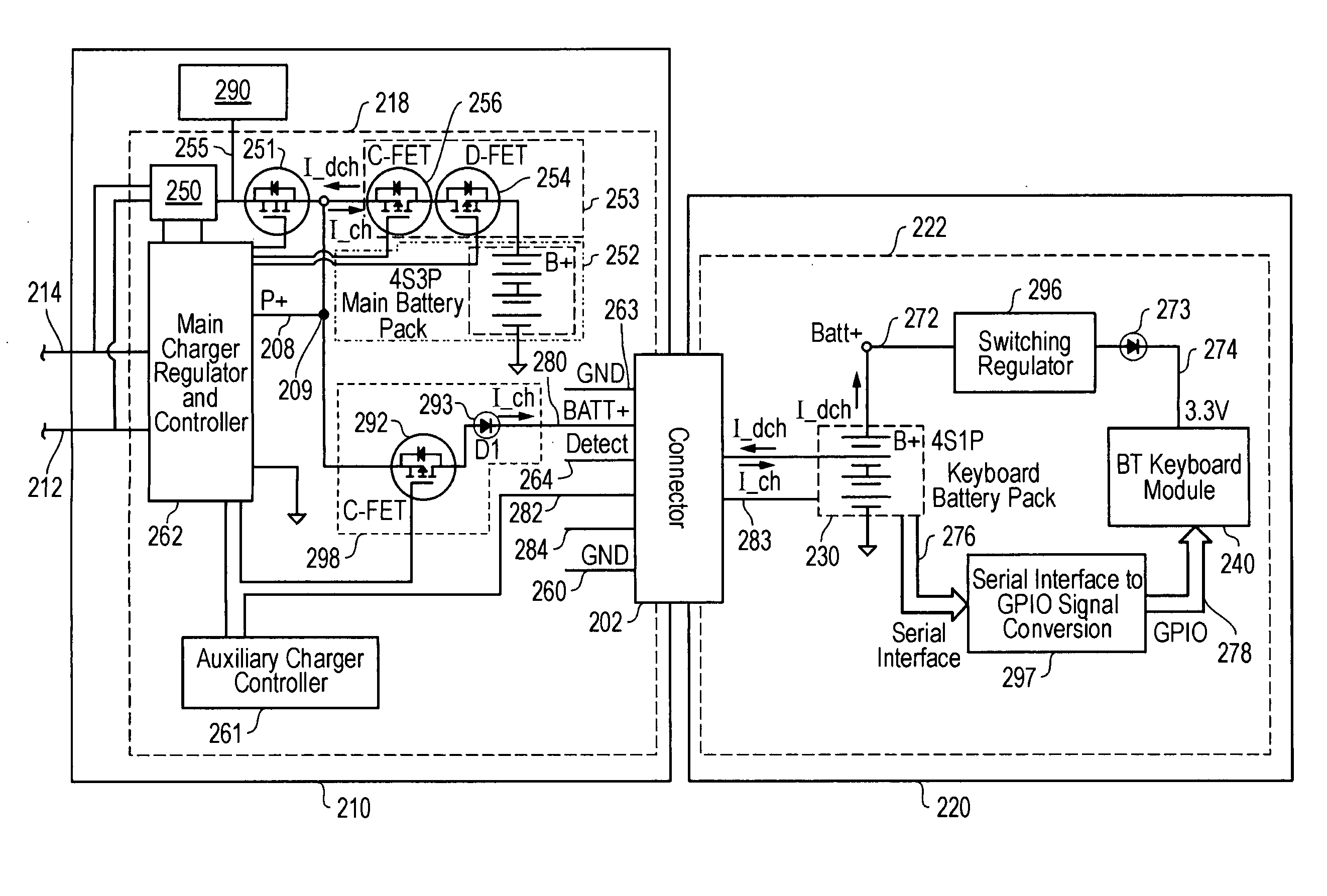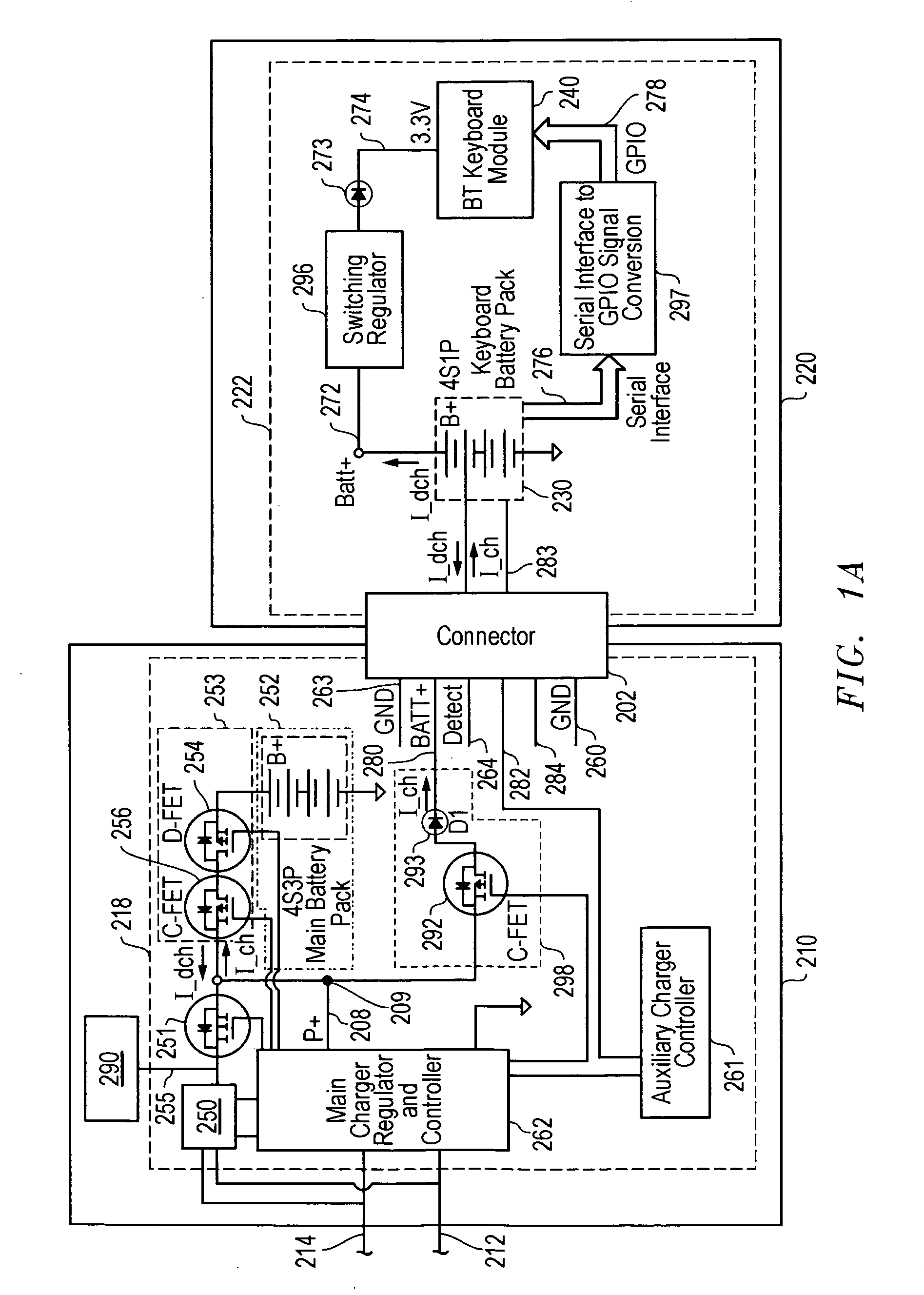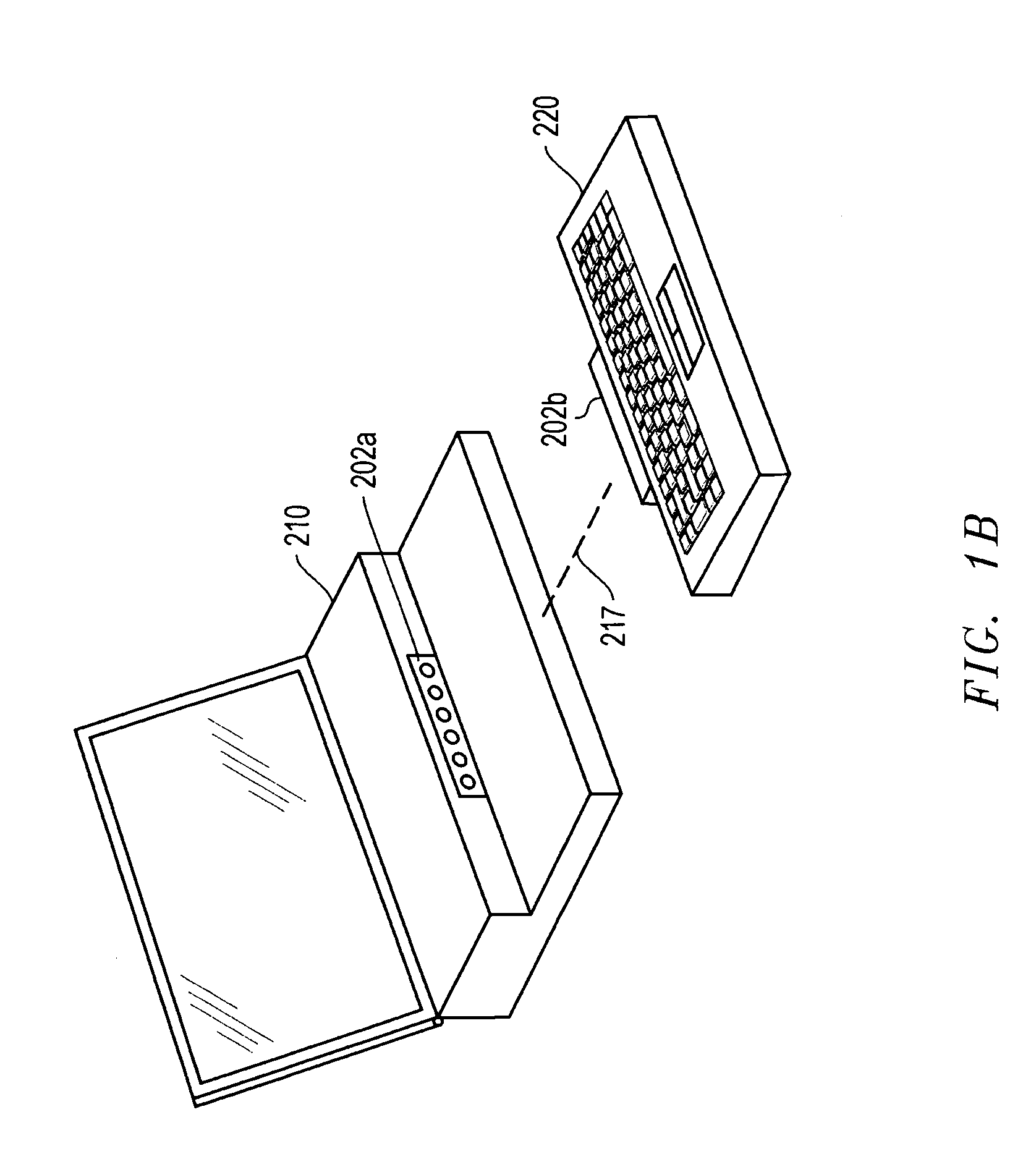[0007]Disclosed herein are systems and methods for
interfacing a
battery system of a battery-powered keyboard (e.g.,
wireless keyboard) with components of a main
battery system of a battery-powered information
handling system (e.g., portable information
handling system such as notebook computer system). In one embodiment, the disclosed systems and methods may be implemented to provide a new
power architecture that leverages and enables a battery charging system of a battery-powered information
handling system so that it is capable of charging both the main
battery pack of the information handling system, and a battery pack of a battery-powered keyboard system without the presence of a separate stand-alone
battery charger in the battery-powered keyboard system. In another embodiment, the disclosed systems and methods may be implemented so that the battery of a battery-powered keyboard system may be used to supplement the main battery of a battery-powered information handling system, e.g., in case of emergency
power loss or to extend total battery life for running the battery-powered information handling system.
[0009]In one embodiment, a
power architecture may be provided that enables a keyboard battery system to provide power to supplement a non-keyboard battery system (e.g., main battery system) of an information handling system, such as a portable information handling system. In such an embodiment, one or more benefits may be achieved, including providing a battery
backup and / or
uninterruptible power supply (UPS) for preventing
data loss in case of main battery pack failure emergency that is not possible with conventional portable information handling systems (e.g. notebook computers) that are configured with higher capacity main system battery packs.
[0010]In addition, it is also possible to utilize the disclosed systems and methods to realize significant extension of total information handling system battery life (e.g., by over 30%) from the combination of main battery pack and keyboard battery pack. Design flexibility may be advantageously provided that allows optimization of the battery pack size / capacity for both a
wireless keyboard battery pack and a main battery pack (i.e., relative size / capacity of each battery pack may be varied to meet design criteria while maintaining the same total information handling system battery life since the total information handling system battery life is a function of the sum of the keyboard battery pack capacity and the main battery pack capacity). Because total information handling system battery life is not dependent only on the capacity of the main battery system but is shared between main battery pack and keyboard battery pack, the size of the main battery pack may be reduced in way that maintains or increases the total information handling system battery life but at the same time reduces the battery pack transportation fees related to regulatory limits imposed on large battery packs, i.e., such as imposed by CFR49 requirements.
[0011]In another embodiment, a communication scheme may be provided between control component / s of the
wireless keyboard system, control component / s of an information handling system, and main system and keyboard
smart battery packs. The benefits that may be achieved in the implementation of such an embodiment include, but are not limited to, allowing the main system battery monitoring components of the information handling system to monitor and manage charging and discharging status for both main battery pack / s and keyboard battery pack / s.
[0012]In yet another embodiment, the main battery charging system of an information handling system may be employed to charge battery cells of a keyboard battery system and battery cells of a main battery system of an information handling system. Such an embodiment advantageously makes possible total charger circuit cost reduction by eliminating the need for a second and separate stand-alone
battery charger for the keyboard battery system. Thus, the disclosed systems and method may be implemented in a manner that addresses battery size regulatory requirements, while at the same time reducing costs and providing increased power /
energy delivery capability. In a further exemplary embodiment, the same connector interface provided for connection of a keyboard battery system to a main battery system may be employed to connect an extra non-keyboard battery pack to the main battery system of the information handling system for charging. This proposal can span across other applications, for example, it will allow customers to charge extra battery pack by using same
interface definition as wireless keyboard.
 Login to View More
Login to View More  Login to View More
Login to View More 


